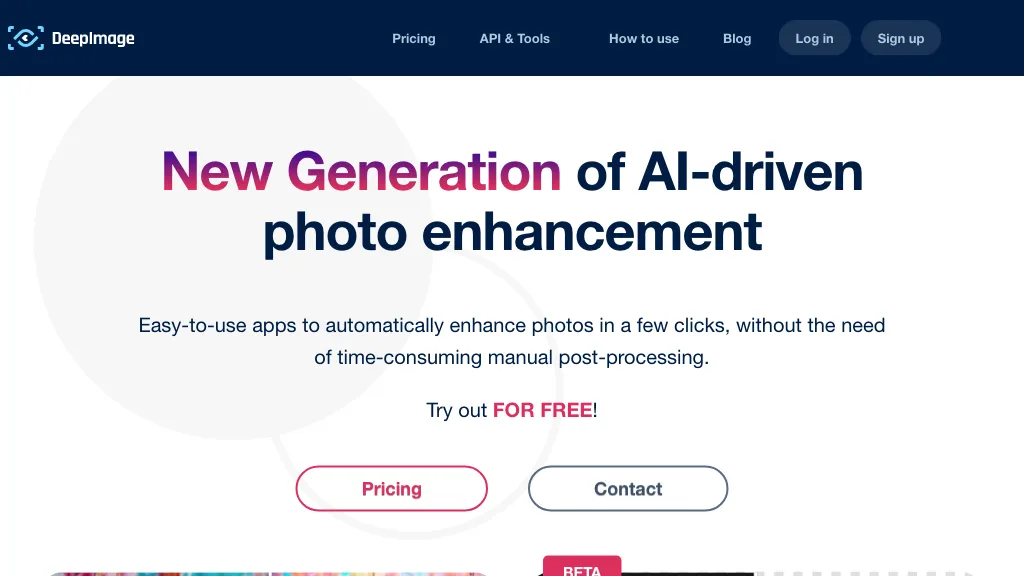Deep Hot.Link: The Ultimate Guide To Understanding And Maximizing Its Potential
Ever wondered what deep hot.link is and how it could impact your online presence? Well, buckle up because we’re diving headfirst into the world of deep hot.links! This isn’t just about clicking buttons or sharing links; it’s about understanding the mechanics behind them and how they can transform your digital strategy. Whether you’re a business owner, a content creator, or just someone curious about the internet’s inner workings, this guide has got you covered.
Deep hot.links are more than just fancy words thrown around in tech circles. They represent a powerful tool that can enhance user engagement, drive traffic, and even boost conversions. In this article, we’ll break down everything you need to know about deep hot.links, from their definition to practical applications. So, if you’re ready to unlock the secrets of this digital phenomenon, let’s get started!
Before we dive too deep, let’s clarify something: this isn’t just another tech article filled with jargon. We’re keeping it real, breaking things down in a way that makes sense, and ensuring you leave here with actionable insights. So, whether you’re a rookie or a pro, there’s something in here for everyone. Let’s go!
- Why Vegamovies Apple Tv Is The Ultimate Streaming Experience
- Vaughan Guynn Funeral Home Inc Obituaries A Heartfelt Tribute
What Exactly Are Deep Hot.Links?
Deep hot.links, at their core, are hyperlinks that lead users directly to specific sections or pages within a website rather than the homepage. Think of them as shortcuts that take you straight to where the action is. For instance, instead of landing on a homepage and navigating through menus, a deep hot.link can drop you right into a product page, a blog post, or even a specific paragraph within an article. Pretty cool, right?
This concept isn’t new, but its importance has grown exponentially with the rise of mobile browsing and the need for faster, more direct user experiences. By leveraging deep hot.links, businesses and content creators can streamline user journeys, reduce bounce rates, and increase engagement. But how exactly do they work? Let’s explore that next.
How Do Deep Hot.Links Work?
Deep hot.links function by appending specific parameters or anchor tags to a URL. These parameters tell the browser exactly where to go once the link is clicked. For example, a URL like https://example.com/#section3 will take you directly to section 3 of the page. This is made possible by HTML anchor tags and modern web development practices.
- Jeremy Jack Bieber Unveiling The Rising Stars Journey
- Jeffrey Dahmer Polaroids The Dark Legacy Captured In Film
But it’s not just about appending hashtags. Deep hot.links can also include query strings that pass data to the destination page, enabling personalized experiences. For instance, an e-commerce site might use a deep hot.link to direct users to a product page with pre-selected options based on their preferences. This level of customization is what makes deep hot.links so powerful.
Why Are Deep Hot.Links Important?
In today’s fast-paced digital world, users expect instant gratification. They don’t want to waste time navigating through multiple pages to find what they’re looking for. Deep hot.links address this need by providing direct access to relevant content. This not only improves user experience but also enhances SEO performance, as search engines favor websites that offer seamless navigation.
Moreover, deep hot.links can be a game-changer for marketing campaigns. By directing users to specific landing pages or sections, businesses can better track user behavior, measure campaign effectiveness, and optimize their strategies. It’s like having a GPS for your website visitors.
Types of Deep Hot.Links
Not all deep hot.links are created equal. Depending on their purpose and functionality, they can be categorized into different types:
- Anchor Links: These take users to specific sections within a single page. Great for long-form content or FAQs.
- Parameterized Links: These include query strings that pass data to the destination page. Useful for personalized experiences or tracking purposes.
- Dynamic Links: These links adapt based on the user’s device or location. Ideal for mobile-first strategies.
- Branded Links: Customized links that reflect a brand’s identity. Perfect for enhancing brand recognition.
Understanding these types can help you choose the right deep hot.link for your needs. But remember, the key is to use them strategically and not overwhelm your audience with too many options.
Benefits of Using Deep Hot.Links
The advantages of deep hot.links are numerous and far-reaching. Here are some of the most significant benefits:
- Improved User Experience: Users get exactly what they’re looking for without unnecessary detours.
- Increased Engagement: By directing users to relevant content, you keep them engaged longer.
- Better SEO Performance: Search engines love websites that offer smooth navigation and relevant content.
- Enhanced Tracking: Deep hot.links make it easier to track user behavior and measure campaign success.
- Personalized Experiences: With parameterized links, you can tailor content to individual preferences.
These benefits aren’t just theoretical; they’ve been proven through real-world applications and case studies. So, if you’re not already using deep hot.links, you might be missing out on some serious opportunities.
Challenges and Best Practices
While deep hot.links offer numerous advantages, they’re not without their challenges. One common issue is maintaining link integrity. If a page or section is updated or removed, the deep hot.link may break, leading to a poor user experience. To avoid this, it’s crucial to regularly audit your links and ensure they’re functioning as intended.
Another challenge is overusing deep hot.links. Too many links on a single page can confuse users and dilute the effectiveness of your content. The key is to strike a balance and use deep hot.links sparingly but strategically.
Here are some best practices to keep in mind:
- Test your links regularly to ensure they work as expected.
- Use descriptive anchor text to give users context about where the link will take them.
- Avoid overloading pages with too many deep hot.links.
- Consider user intent when creating deep hot.links. What are they looking for, and how can you get them there quickly?
How to Create Effective Deep Hot.Links
Creating effective deep hot.links involves a combination of technical skills and strategic thinking. Here’s a step-by-step guide:
- Identify Key Content: Determine which sections or pages are most valuable to your audience.
- Assign Anchor Tags: Use HTML anchor tags to mark specific sections within your content.
- Test Your Links: Before going live, test your deep hot.links to ensure they work correctly.
- Monitor Performance: Use analytics tools to track how users interact with your deep hot.links and make adjustments as needed.
By following these steps, you can create deep hot.links that not only work but also add value to your users’ experience.
Case Studies: Real-World Applications of Deep Hot.Links
To truly understand the power of deep hot.links, let’s look at some real-world examples:
Example 1: E-Commerce Giant
A major e-commerce platform used deep hot.links to direct users to specific product categories based on their search queries. This resulted in a 25% increase in conversion rates, as users were more likely to purchase when they landed directly on the products they were interested in.
Example 2: Content Marketing Agency
An agency specializing in content marketing used deep hot.links to guide readers to specific sections of their long-form articles. This not only improved engagement but also increased time spent on site, a key metric for SEO success.
These case studies demonstrate the tangible benefits of deep hot.links when implemented correctly.
Tools and Resources for Deep Hot.Links
While creating deep hot.links manually is possible, there are several tools and resources available to simplify the process:
- Google Analytics: Use this tool to track how users interact with your deep hot.links and optimize accordingly.
- Link Management Platforms: Tools like Bitly or Rebrandly can help you create and manage branded deep hot.links.
- SEO Plugins: Plugins like Yoast SEO can assist in optimizing your deep hot.links for search engines.
Investing in these tools can save you time and effort while ensuring your deep hot.links are as effective as possible.
Future Trends in Deep Hot.Links
As technology continues to evolve, so too will the role of deep hot.links. Some emerging trends to watch include:
- AI-Powered Links: Using artificial intelligence to create dynamic, personalized deep hot.links.
- Voice Search Optimization: Adapting deep hot.links for voice-activated devices like smart speakers.
- Augmented Reality Integration: Combining deep hot.links with AR to create immersive user experiences.
Staying ahead of these trends can give you a competitive edge in the ever-changing digital landscape.
Conclusion: Why Deep Hot.Links Matter
In conclusion, deep hot.links are a vital component of any successful digital strategy. They enhance user experience, improve SEO performance, and provide valuable insights into user behavior. By understanding their mechanics, benefits, and best practices, you can harness their power to drive real results for your business or brand.
So, what are you waiting for? Start exploring the world of deep hot.links today and see the difference they can make. And don’t forget to share your thoughts in the comments below or check out our other articles for more digital insights!
Table of Contents
- What Exactly Are Deep Hot.Links?
- How Do Deep Hot.Links Work?
- Why Are Deep Hot.Links Important?
- Types of Deep Hot.Links
- Benefits of Using Deep Hot.Links
- Challenges and Best Practices
- How to Create Effective Deep Hot.Links
- Case Studies: Real-World Applications of Deep Hot.Links
- Tools and Resources for Deep Hot.Links
- Future Trends in Deep Hot.Links



Detail Author:
- Name : Dagmar Crooks
- Username : jackeline.lebsack
- Email : thammes@heaney.com
- Birthdate : 1979-12-01
- Address : 5280 Jaskolski Station Apt. 883 Flavioville, KS 12723
- Phone : +1 (689) 662-7126
- Company : Wolf, Hirthe and Runolfsson
- Job : Cost Estimator
- Bio : Autem autem doloribus a voluptatem sed voluptas. Qui aut consectetur iste. Vel suscipit modi ea illum.
Socials
facebook:
- url : https://facebook.com/dachi
- username : dachi
- bio : Iure et alias veritatis.
- followers : 5182
- following : 2479
tiktok:
- url : https://tiktok.com/@dach1979
- username : dach1979
- bio : Vel aliquid sunt cumque ut. Ipsa ullam ut fugit nesciunt corporis illo.
- followers : 3455
- following : 763